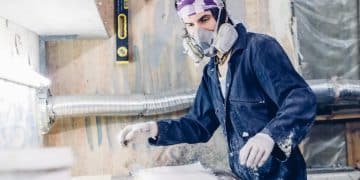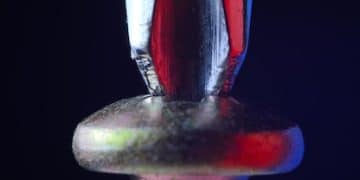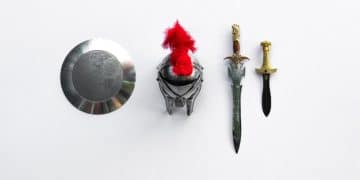Master Cosplay Prop Finishing: Sanding, Priming, & Sealing Guide

Cosplay prop finishing techniques such as sanding, priming, and sealing are essential for creating durable, professional-looking props; mastering these methods ensures your cosplay withstands wear and tear while maintaining a high-quality appearance.
Creating impressive cosplay props involves more than just crafting the base shape. The finishing touches are crucial for achieving a professional and durable result. This guide focuses on essential cosplay prop finishing techniques, delving into sanding, priming, and sealing to elevate your creations.
Why Finishing Matters: Beyond the Build
The initial construction of your cosplay prop is only half the battle. The finishing process is what separates a good prop from a truly spectacular one. It’s about achieving the right texture, color, and durability to bring your character to life.
Effective finishing techniques not only enhance the aesthetic appeal of your prop but also protect it from damage. A well-finished prop can withstand the rigors of conventions, photoshoots, and general handling, ensuring your hard work doesn’t go to waste. Think of it as applying a professional-grade paint job to a custom car – it’s what makes it stand out.
The Importance of Surface Preparation
Before any color or sealant is applied, the surface of your prop needs to be prepared. This involves removing imperfections, creating a smooth base, and ensuring proper adhesion for subsequent layers. Neglecting this step can lead to uneven finishes, peeling paint, and a generally unprofessional look.
- Removing Imperfections: Sanding and filling address any bumps, scratches, or gaps in the prop’s surface.
- Creating a Smooth Base: A smooth surface is critical for achieving a flawless paint job.
- Ensuring Proper Adhesion: Priming creates a surface that paint and sealants can properly bond to, preventing chipping and peeling.
In essence, proper surface preparation is the foundation upon which a stellar finish is built. It’s the key to achieving a professional-looking prop that will impress and endure.
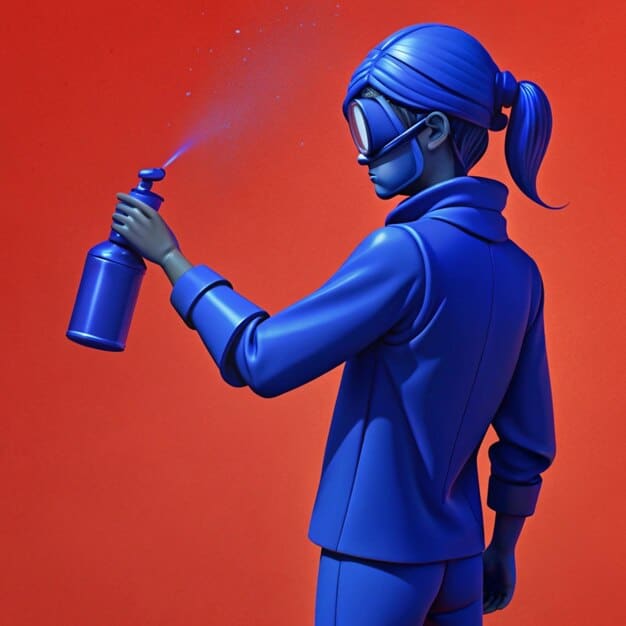
Sanding: Achieving a Flawless Surface
Sanding is a fundamental step in cosplay prop finishing, essential for creating a smooth surface ready for priming and painting. It involves using abrasive materials to remove imperfections, layer lines (especially in 3D-printed props), and any unwanted texture.
Choosing the right sandpaper grit is crucial. Starting with a coarser grit (e.g., 120-180) helps to quickly remove larger imperfections. Progressing to finer grits (e.g., 220-320, then 400-600) gradually refines the surface, creating a near-perfect canvas for your paint job.
Sanding Techniques for Different Materials
The best sanding method depends heavily on the specific materials used in your cosplay prop. Each material reacts differently to sanding, necessitating tailored techniques to prevent damage and achieve the desired smoothness.
- 3D-Printed PLA/ABS: Start with coarser grits to eliminate layer lines, then move to finer grits. Wet sanding can minimize dust and provide a smoother finish.
- EVA Foam: Use a heat gun to seal the foam before sanding. This helps to prevent the foam from tearing and creates a smoother surface. Sand lightly to avoid damaging the foam’s structure.
- Worbla: Worbla can be sanded, but be careful not to overheat the material. Use a medium grit sandpaper and gentle pressure.
Proper sanding not only improves the look of your prop but also enhances paint adhesion, ensuring a durable and long-lasting finish. This step requires patience and attention to detail, but the results are well worth the effort.
Priming: The Key to Paint Adhesion and Color Vibrancy
Priming is an often-overlooked but essential step in cosplay prop finishing. It involves applying a base coat to your sanded prop, creating a uniform surface that promotes paint adhesion and enhances color vibrancy. A good primer can make the difference between a mediocre finish and a professional-grade paint job.
Choosing the right type of primer depends on the materials used in your prop. For example, a primer designed for plastic will work best on 3D-printed parts, while a flexible primer is ideal for EVA foam. Using the wrong primer can lead to adhesion issues and a less durable finish.
Types of Primers and Their Applications
The market offers a variety of primers, each with its own unique properties and best-use scenarios. Knowing which primer to select for your specific material is crucial for achieving optimal results.
- Spray Primer: Easy to apply and provides a smooth, even coat. Ideal for large, complex shapes.
- Brush-On Primer: Offers more control for detailed areas and smaller props.
- Filler Primer: Contains additives that help fill small imperfections, reducing the need for extensive sanding.
Applying primer correctly is also key. Use light, even coats to avoid drips and runs. Allow each coat to dry completely before applying the next. This ensures a smooth, consistent surface that is ready for painting. A well-primed prop will not only look better but also have a more durable and long-lasting finish.
Sealing: Protecting Your Hard Work
Sealing is the final step in cosplay prop finishing, designed to protect your paint job and enhance the overall durability of your prop. A good sealant provides a protective barrier against scratches, UV damage, and general wear and tear, ensuring your hard work stands the test of time.
Choosing the right sealant depends on the type of paint you’ve used and the desired finish. Acrylic paints, for example, benefit from a clear acrylic sealant. Consider whether you want a glossy, matte, or satin finish, as sealants come in a variety of sheens.
Application Techniques for Sealants
Applying a sealant correctly is just as important as choosing the right product. Improper application can lead to uneven finishes, cloudiness, or even damage to your paint job.
- Clean the Surface: Ensure the prop is free of dust and debris.
- Apply Thin Coats: Multiple thin coats are better than one thick coat.
- Allow Proper Drying Time: Follow the manufacturer’s instructions for drying times.
Applying a sealant is the last line of defense, ensuring your prop maintains its pristine appearance through countless conventions and photoshoots. By carefully selecting and applying the right sealant, you invest in the longevity and beauty of your creation.
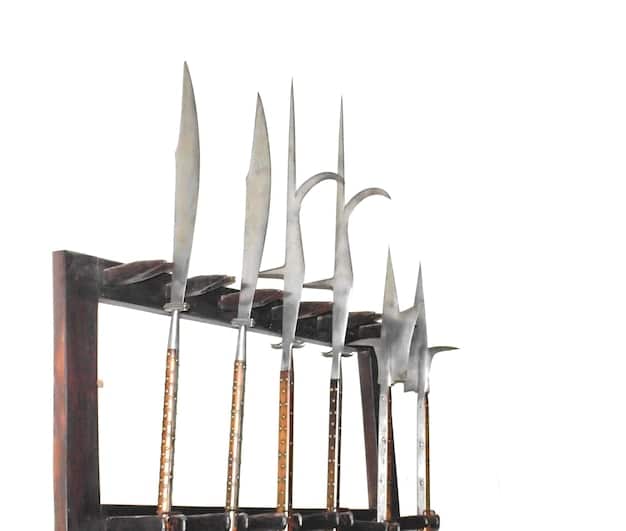
Advanced Techniques: Weathering and Detailing
Once you’ve mastered the basics of sanding, priming, and sealing, you can explore advanced techniques to add depth and realism to your cosplay props. Weathering and detailing can transform a simple prop into a battle-worn artifact or a futuristic gadget.
Weathering involves creating the appearance of age, wear, and damage. This can be achieved using a variety of techniques, such as dry brushing, washes, and stippling. The key is to study reference images and understand how different materials age and degrade over time.
Adding Depth and Realism to Your Props
Advanced techniques allow you to push the boundaries of realism, turning a simple prop into a storytelling element that enriches your cosplay. By carefully applying these methods, you can create the illusion of wear and tear, history, and character.
- Dry Brushing: Use a stiff brush with a small amount of paint to highlight edges and textures.
- Washes: Apply a thin, diluted paint over the entire surface to create shadows and depth.
- Stippling: Use a sponge or brush to create a textured, worn appearance.
Mastering weathering and detailing requires practice and experimentation. Don’t be afraid to try new techniques and learn from your mistakes. The goal is to create a prop that tells a story and enhances your overall cosplay experience.
Troubleshooting Common Finishing Issues
Even with careful planning and execution, you may encounter common issues during the finishing process. Knowing how to troubleshoot these problems can save you time and frustration.
Paint chipping, uneven finishes, and sealant cloudiness are just a few of the challenges that cosplayers face. Understanding the causes of these issues and how to prevent them is crucial for achieving a professional-looking finish.
Solutions to Frequent Problems
Being prepared to address common stumbling blocks is a vital part of the finishing process. By learning to recognize and correct these problems early, you save time and ensure a superior final result.
- Paint Chipping: Ensure proper surface preparation and use a flexible primer.
- Uneven Finishes: Apply thin, even coats of paint and sealant.
- Sealant Cloudiness: Avoid applying sealant in humid conditions and use a high-quality product.
By identifying and addressing common finishing issues, you can ensure a smooth and successful process from start to finish. Remember, practice makes perfect, so don’t be discouraged by initial setbacks. Keep experimenting and refining your techniques, and you’ll be creating flawless cosplay props in no time.
| Key Point | Brief Description |
|---|---|
| 🧽 Sanding | Smooths prop surfaces before painting by removing imperfections. |
| 🎨 Priming | Prepares the surface for paint, ensuring better adhesion and color. |
| 🛡️ Sealing | Protects the paint job and enhances the prop’s durability. |
| ⚙️ Weathering | Adds realism by creating the appearance of wear and damage. |
FAQ
▼
Start with a coarser grit (120-180) to remove large imperfections and layer lines. Then, gradually move to finer grits (220-600) for a smooth finish. Wet sanding can also minimize dust.
▼
A flexible primer is ideal for EVA foam. It helps prevent cracking and peeling, ensuring a durable and long-lasting finish that can withstand bending and flexing.
▼
Apply multiple thin coats rather than one thick coat. This ensures even coverage and prevents drips and runs. Allow each coat to dry completely before applying the next for best results.
▼
Dry brushing is a weathering technique that uses a stiff brush with a small amount of paint to highlight edges and textures. It creates a worn, aged look by emphasizing details and contours.
▼
Avoid applying sealant in humid conditions, which can cause cloudiness. Use a high-quality sealant designed for the type of paint you’ve used, and ensure the surface is clean and dry before application.
Conclusion
Mastering cosplay prop finishing techniques through sanding, priming, and sealing is essential for crafting durable and visually impressive props. With the knowledge shared in this guide, you’re well-equipped to elevate your cosplay creations. By dedicating time and effort to each stage, from proper sanding to meticulous sealing, you ensure your props not only look fantastic but also withstand the test of time. Remember, the finishing touches are what truly bring your cosplay to life.
